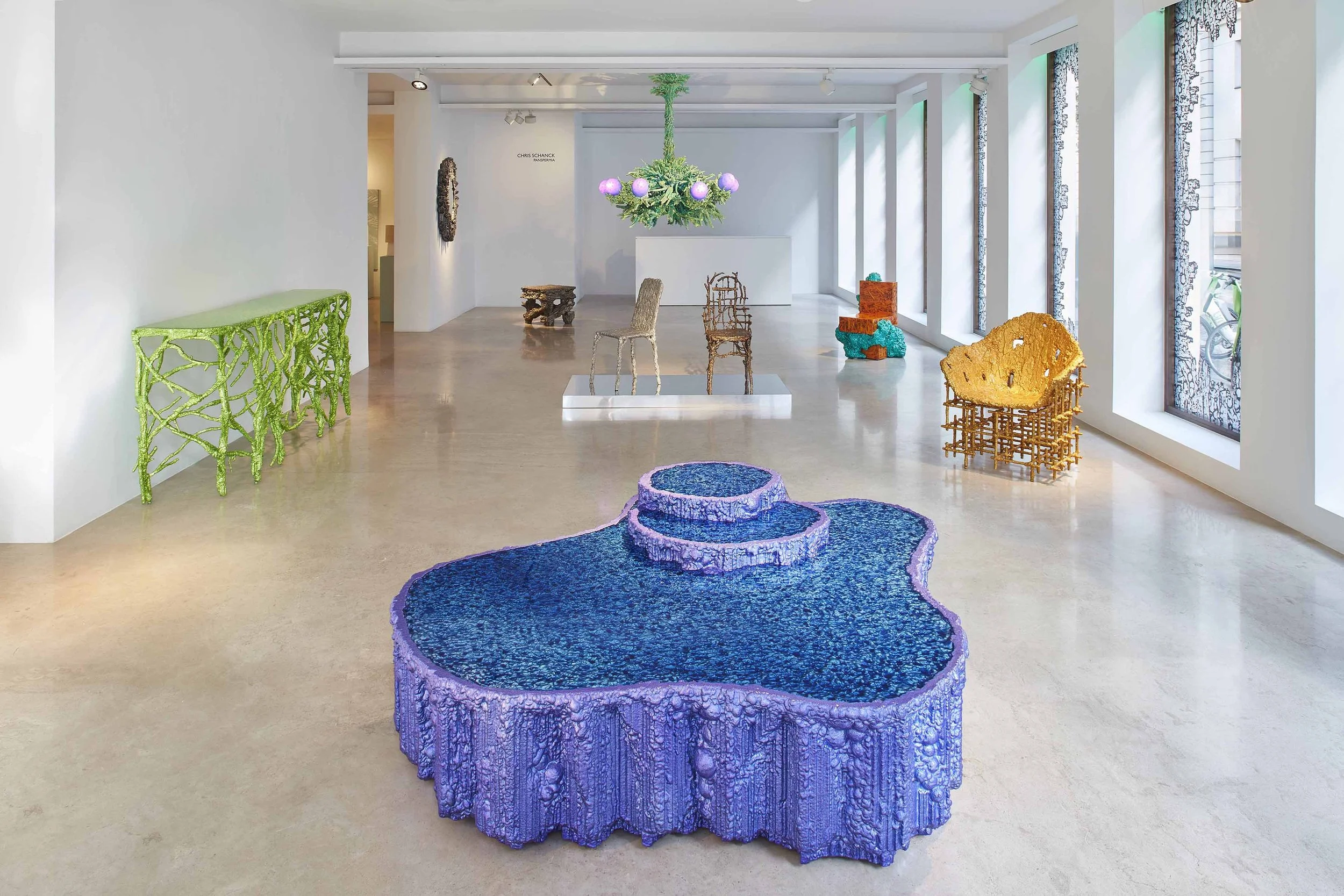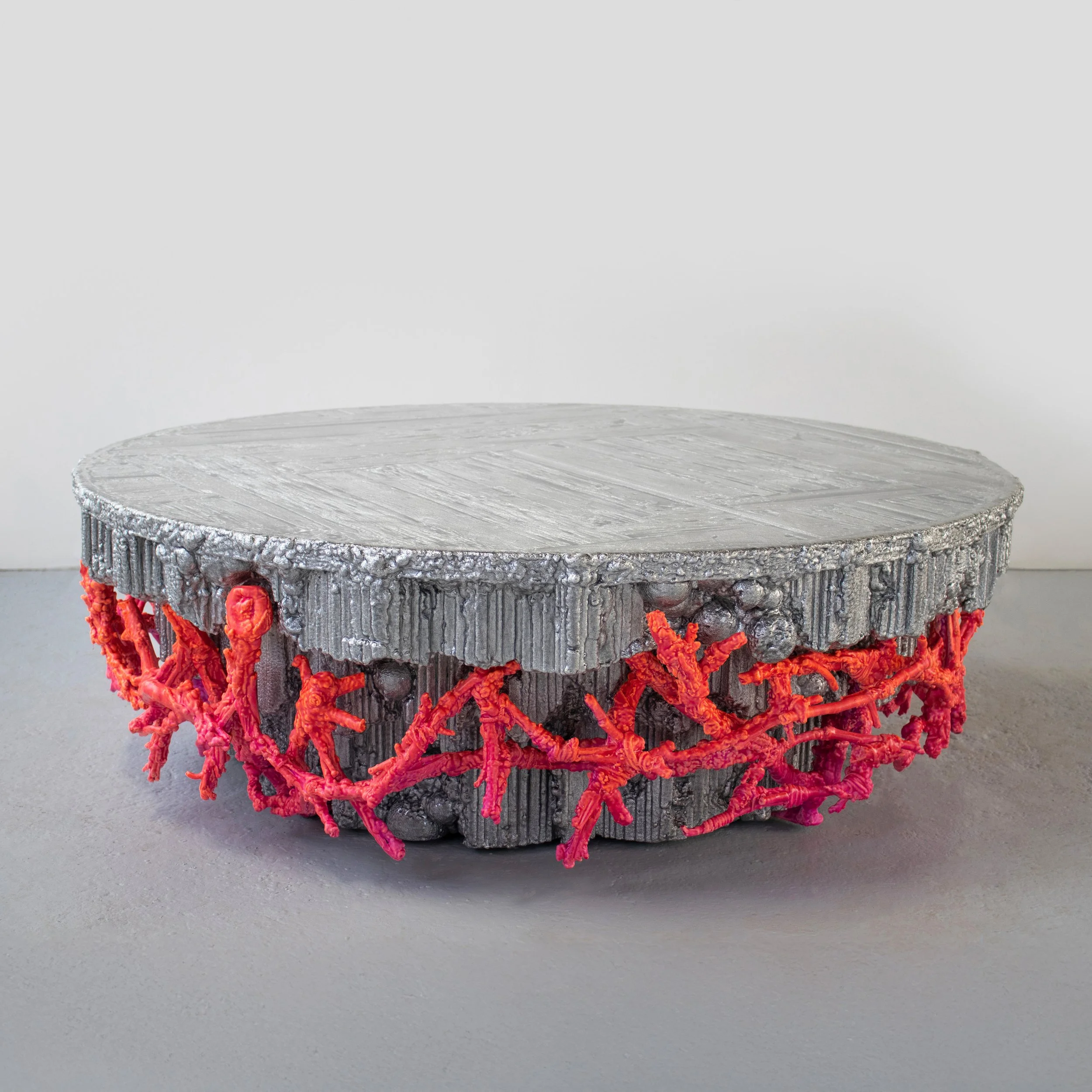CHRIS SCHANCK
Chris Schanck born in Pittsburgh, in 1975 first studied fine art at the School of Visual Arts in New York, and then pursued Design at Cranbrook. The Detroit-based artist’s work plays in the liminal space between art and design. The fantastical pieces he now produces can be judged on their narrative, or their function. Or indeed, on an intriguing material complexity, since Schanck takes multiple elements of little or no value – cheap plywood, scavenged sticks – and both disguises and transforms them with luscious coatings of resin or aluminium foil. Every piece contains more than one story.
Detroit plays a major part in Schanck’s story. He moved to the city from New York in 2009, and set up his studio in an area largely inhabited by immigrants from South Asia, particularly Bangladesh. They have named it Banglatown. “It was a very different time,” says Schanck. “I could drive down the opposite side of the street in the middle of the day without anyone seeming to notice or care. Now luxury boutiques have begun to line those same streets. If New York was about finding a place in a status-driven artworld, in Detroit he found an enduring belief in community, self-sufficiency and in art as an end in itself, rather than a means to accrue money and repute. “Art and life exist as a co-dependent relationship inside myself, and we’ve always looked after each other.” he says. In his studio, there are now seven assistants, including two local Bengali women. This is not a charitable act. “I needed assistants and no one from art schools wanted to come to the city, so out of necessity I hired my neighbours – and they have been some of the best people I have ever worked with.”
While a priority of the studio is to work on objects that people will use, and to be sustainable in its operation (commissions from luxury houses including Dior, Bottega Veneta and Tom Ford have all helped with that), for Schanck new territory needs continually to be broached.
Being in Detroit has enabled Schanck to create a very particular practice that celebrates both making and personal and intellectual pathfinding. “I want to create meaningful work, by that I mean to unlock some kind of essence to understand what I’m made of, and to figure out my relative place in the world.”





















